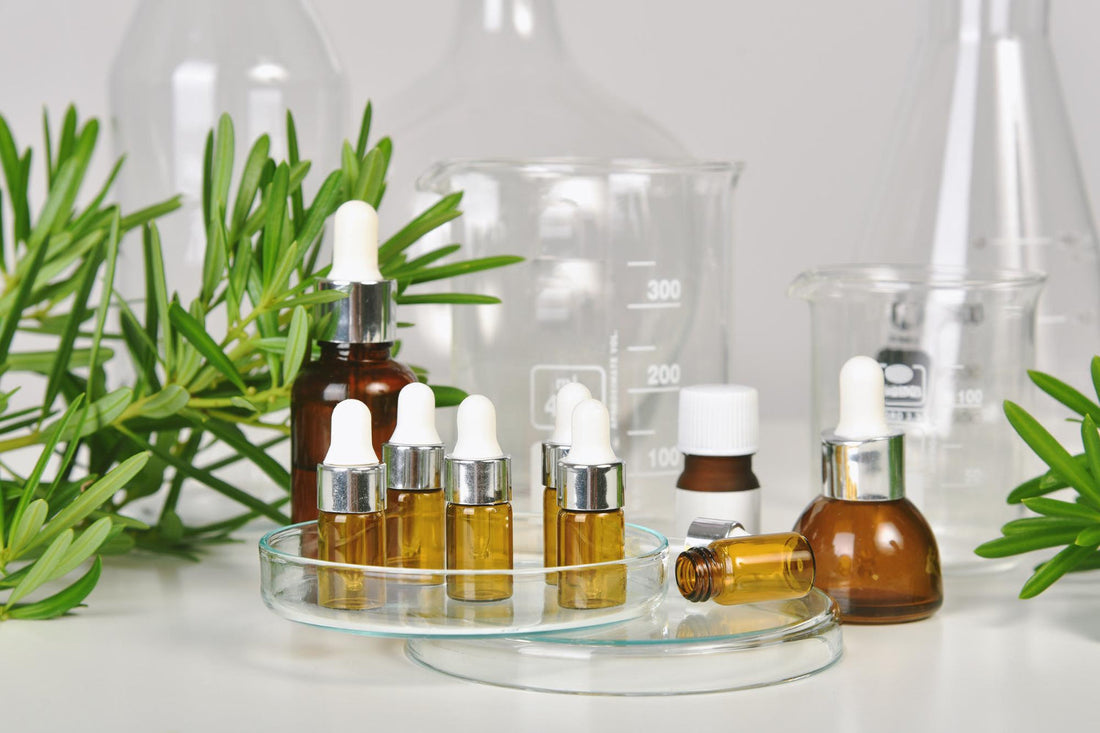
Know the Difference – How Serums, Toners, Gels, Creams, and Lotions Differ
When it comes to personal care and skincare product development, form matters. The texture, consistency, and composition of a product not only shape how it feels but also how it performs, how ingredients are delivered, and how consumers experience the product overall. At Cosmetech, we work with brands to make form decisions that are grounded in both technical function and emotional appeal — because a serum that feels too sticky or a cream that’s too heavy can be the difference between repurchase and rejection.
So how do you know which format is right for your formulation? Let’s explore five of the most common forms — toners, serums, gels, creams, and lotions — and how each one supports different needs.
Toners: Light, Balancing, Foundational
Toners are water-based, fast-absorbing liquids typically used immediately after cleansing to reset the skin’s pH and remove residual impurities. But modern formulations go far beyond astringency. Today’s toners often include skin-loving ingredients such as niacinamide, aloe vera, and mild exfoliating acids that hydrate, soothe, and lightly refine the skin’s surface.
Toners are commonly used to rehydrate skin post-cleanse and to prep it for better absorption of follow-up products like serums and moisturisers. In oily and acne-prone skincare routines, toners help to gently clear pores and support skin clarity without the weight of a cream. For consumers who love layering lightweight steps, toners are a must — offering a clean, refreshing base that enhances every product applied afterward.
Serums: High-Performance, Precision Formulas
Serums are typically the powerhouse of any skincare routine. Lightweight but highly concentrated, they’re formulated to deliver targeted actives directly into the skin, with minimal filler. Their fluid texture, whether water-based or oil-based, allows for rapid absorption and deeper penetration of key ingredients like peptides, antioxidants, hyaluronic acid, or vitamin C.
Because they’re designed for efficacy, serums are commonly used to treat specific concerns like pigmentation, fine lines, acne, or dehydration. Consumers reach for serums when they want visible results from potent ingredients — whether it’s brightening the complexion, smoothing texture, or calming inflammation. From a formulation standpoint, serums offer unmatched precision and potency, making them an essential product for brands aiming to be results-driven or clinically positioned.
Gels: Fresh, Lightweight, and Oil-Free
Gels are water-rich, fast-drying formulations known for their refreshing feel and clean finish. Their non-greasy, transparent texture is ideal for products targeting oily or acne-prone skin, as well as for consumers who dislike the weight of heavier creams or oils.
Gels are commonly used in skincare and personal care ranges where a cooling, lightweight experience is key. Think: after-sun gels that calm overheated skin, aloe-based hydrators for irritation relief, or even sexual wellness products where clarity, glide, and freshness matter. They are also ideal for humid climates or summer-focused products, where users want hydration without heaviness. In addition, the visual clarity of gels makes them a compelling option for clear packaging — offering aesthetic appeal in addition to functional benefit.
Creams: Rich, Nourishing, and Protective
Creams are the workhorses of skincare — thick, emulsified formulas that provide intense hydration and a protective barrier for the skin. With a combination of oil and water phases, creams deliver both moisture and nourishment, supporting the skin’s barrier and locking in active ingredients for longer-lasting results.
Creams are commonly used in nighttime skincare routines, dry skin treatments, or in colder climates where additional skin support is essential. Their thicker texture allows them to seal in moisture and comfort irritated or dehydrated skin. Consumers often associate creams with care — be it anti-aging night creams rich in peptides and ceramides, barrier creams for sensitive skin, or deeply hydrating hand and body products. For brands, creams provide a luxurious, tactile experience that communicates efficacy and richness, especially in premium or clinical lines.
Lotions: Versatile, Everyday Hydration
Lotions occupy the middle ground between creams and gels — fluid, fast-absorbing, and easy to apply. Typically lighter than creams but more nourishing than gels, lotions are formulated to hydrate without heaviness, making them an ideal choice for daily body care and family-friendly ranges.
They are commonly used in everyday moisturisers, post-shower body care, or facial products where comfort and quick absorption are important. Because of their versatility, lotions are a go-to for broad appeal products — from unisex skincare to multi-generational use. Their smooth texture ensures spreadability and fast application, which makes them especially practical for consumers looking for a no-fuss routine. For formulators, lotions allow flexibility with active ingredients while still offering that luxurious skin feel.
Final Thoughts from Cosmetech
Texture isn’t just cosmetic — it’s central to performance, sensorial appeal, and commercial success. Whether you’re formulating a results-driven clinical range, a sensorial self-care experience, or an everyday essential, selecting the right format is key to how the product will be used, perceived, and loved.
At Cosmetech, we take the complexity out of form and function. With in-house formulation, manufacturing, and testing capabilities — plus deep market insight — we’re here to help you create products that not only work, but work for your audience. Let us help bring your next innovation from concept to customer.
